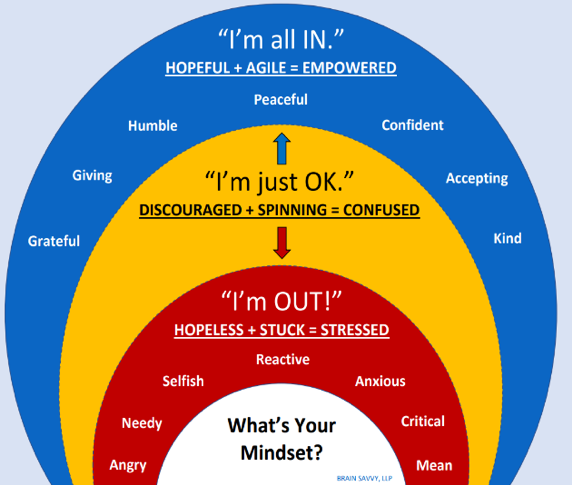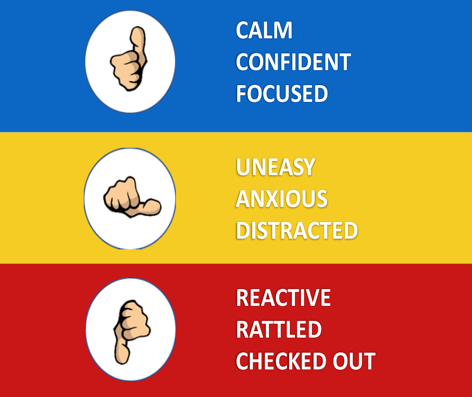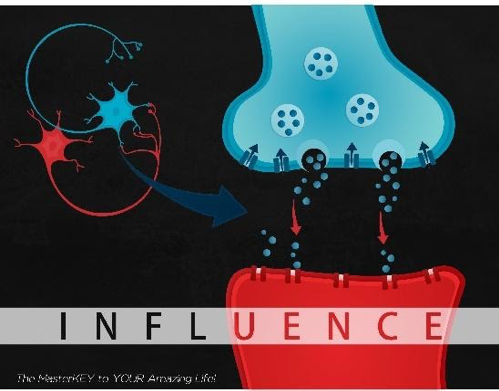
Brain Insights for Better Run Training and Relationships by Dr. Melissa Hallmark Kerr
Wednesday, June 16, 2021
My name is Dr. Melissa Hallmark Kerr and I’m on a mission to help guide and brighten the deeper conversations we runners and fitness enthusiasts are having about stress and resilience, mental health, civility, and the wellspring of it all, emotional connection.
As runners and fitness enthusiasts, we know what it’s like to transform our psyches in as little as 20 sweaty minutes – i.e., to go from feeling flat, or off, to feeling good again. This is the real reason why we always find a way to move, even when we’re injured. Who doesn’t want to feel better? When we feel better, we treat ourselves and others better. And when we treat ourselves and others better, really good things happen like loving marriages, peaceful homes, and happy, resilient kids. This isn’t a new line of thinking. It’s the Golden Rule. And it doesn’t seem that complicated. Yet we lose sight of it more often than we’d like to admit, especially at home. This is why I’m so excited about the amazing new science of the brain. It’s exploding with new insights about everything from conquering addiction to communicating effectively, one beautiful decision at a time.
Here are 4 of those insights and a nudge to download the Brain Savvy App from the Apple Store (free version) which will help you align your run training and your relationships with the Golden Rule more often:
1. Your brain has 3 mindsets. You may recall the terms Growth Mindset and Fixed Mindset that captured the attention of parents and teachers beginning in 2006. I remember when my oldest daughter, now 18, brought home a handout that gave examples of beliefs underlying both. She was 8 and not nearly as enthralled as I was. Although we never adopted this particular language in our home, a seed was planted. Dr. Carol Dweck’s research catapulted mindset into mainstream psychology where it became part of a tradition showing that our beliefs affect what we want and whether we succeed in getting it. This is true. And so is the fact that the entire brain is wired, which is why our beliefs become behaviors and our behaviors become habits and those habits become patterns that are hard to change without the right tools.
When the neuroscientists recently agreed on 4 vs. 5 zones of regulation in the brain, we seized the opportunity to integrate mindset psychology with emerging brain science. We went with 3 colorful mindsets to keep things simple and fun. We’ve given our 3 mindsets many client-inspired labels throughout the years. Sometimes we use Stressed or Me Mindset and Empowered or We Mindset as in the diagram below. I remember when one of my athletes, 16 at the time, blurted out some serious brilliance when he referred to the middle mindset as Transforming. He came up with this after he learned how to use his emotions as tools to outsmart his inner critic. When feeling “just ok” became a moment of opportunity instead of more of the same, he began to soar. Still is.
For the record, I use BLUE – YELLOW – RED like a code every day, to become more self- and other-aware and less judgmental and reactive. As it turns out, I needed more than my runs to fortify my psyche.
2. Mindset determines impact. Blue you is calm, confident, and focused. You feel good if not great. You’re connected to your best self and your goal is to bring out the best in everyone around you. Your decisions are thoughtful, full of compassion for yourself and others. You seek the input of your family before finalizing your training plan because they come first. And you take a day or two off (even when your ego says otherwise) when your body tells you that it needs more time to recover. When your cranky spouse or teen gets wound too tight, you loosen them up with some playful banter.
Yellow you is less stable – uneasy, a bit anxious, and increasingly distracted. You feel “just ok.” Your connection is shaky so you “flicker” in and out of awareness. Holding it together or containing is what you’re about. And you can only do that for so long without a “planned release” of emotional energy. Walking in nature, listening to music, dancing, laughing, talking with a loved one, hanging with your pet, prayer, meditation, breathwork, etc. are all examples of planned release.
Red you is unstable – reactive, rattled, and checked out of the situation or conversation. You feel panicked or nothing at all (numb). You’re in survival mode, disconnected from your best self and those around you. Colliding (flight, flee, or freeze) is what you’re about. It can get ugly (“unplanned release”) when your emotions are making the decisions for you, so it’s important to remember that nothing can be said in red. Although a run can help you feel better, you can’t outrun your red.
3. Missions are critical to mindset. High-performing businesses have inspiring missions – why not families and individuals. The three key elements of a mission are purpose, what you want to do, and what matters to you. Use these questions to jumpstart your mission brainstorm:
-
Who do you want to be?
-
Who/what matters most to you?
-
How do you want people to describe you?
-
What are your deepest values?
-
What anchors you?
-
What do you love to do?
-
What are you passionate about?
-
How do you want to be remembered?
Through a collaborative process, I penned Charm City Run’s mission – to inspire and move the human spirit one sole at a time, and another favorite for Chesapeake High School Cross Country (CHS XC) – to run for fun, fitness, and personal bests. It’s no accident that both CCR and CHS XC have built Golden Rule cultures that adults and kids want to be a part of.
Everyone can benefit from the connecting process of crafting a mission. My recommendation is to keep it short, so short that you can remember it without having to write it.
My personal mission is to Live Blue. It changed a number of times through the years which is normal because we change. I’d be honored to help you with yours.
4. You’re only as good as your brain chemistry. Your capacity to make decisions that influence your life and others positively is directly related to the balance of neurotransmitters in your brain. You may not have realized that your post-run, positive energy, life is good glow is biochemical, or that by improving the connectivity across your brain, you improved your capacity to be friendly and productive. If only there was a way to get charged and stay charged that didn’t feel like one more thing to do.
We felt the same way, so we created the Brain Savvy App to help you stay on top of the Big 6. You can download our app brochure at www.brainsavvytraining.com for a detailed explanation of how the 3 tools work together. The Quick Check on the app is an abbreviated version of our more comprehensive check-in skill. Practiced hourly, it trains your brain to pause and tune into your body so you can gauge how you’re feeling, B, Y, or R.
Once you determine how you’re feeling, you practice the corresponding tool for each mindset. The Red Tool is for reconnecting, the Yellow Tool is for resetting, and the Blue Tool is for savoring the moment to wire those good feelings in.
Do Your DOTS is a brief assessment of the 6 factors or “DOTS” that will help you get charged and stay charged for your best decision-making every day. I recommend tracking your DOTS nightly for at least 4 weeks (without making any behavioral changes unless they happen organically) to look for patterns and areas of opportunity. This approach will provide a good baseline for brain chemistry.
What follows is an explanation of each factor and related references.
1. SLEEP – Your best begins at rest.
The modern view of sleep is that we need to embrace its profound importance to our wellbeing rather than sacrifice it to get more done. This is a tough but necessary shift for the highly motivated. A rested brain is a calm, focused brain, while a restless brain struggles to respond positively to stress and life. A small shift in sleep will make a big difference in your daily energy, mindset, and performance.
Explore www.sleepfoundation.org to learn more about sleep recommendations for different age groups.
For additional inspiration, visit http://healthysleep.med.harvard.edu/healthy/matters/benefits-of-sleep/learning-memory to learn more about the neuroscience of sleep re: perception, learning, memory, mood, motivation, judgment and decision-making.
2. SUN – Look on the bright side.
It’s time to re-balance our perspective on the sun. Without it, we cease to exist. Brief periods of direct exposure throughout the day (e.g., 2-5 minutes for up to 20 minutes total) is an efficient way to elevate mood, motivation, problem-solving, and even Vitamin D over time. A lightbox can help boost energy on rainy days. For longer periods of sun exposure, especially during peak times, be sure to protect your parts.
The following articles highlight the bright side of sun exposure:
http://time.com/4888327/why-sunlight-is-so-good-for-you/
https://www.healthline.com/health/depression/benefits-sunlight
hhttps://www.innerbody.com/vitamin-d-deficiency-and-how-to-avoid-it#how-to-get-more-vitamin-d
3. HYDRATE – Check your pee.
Water accounts for about 60% of our body weight (it’s important). We need to be adequately hydrated to feel focused and energized, and to stave off fatigue and irritability. Since many factors influence how much water we need (and our thirst mechanism isn’t always accurate), the best approach to hydration is to drink mostly water all day long and not too much at any one time. To be sure that you are well-hydrated, look for clear urine on most of your bio breaks.
Visit https://www.hsph.harvard.edu/nutritionsource/water/ for specific recommendations from the National Academy of Medicine for daily intake, and to be inspired to drink more water.
4. FUEL – Eat for energy.
Eating for energy means being proactive about maintaining a stable blood sugar throughout the day. This is the key to a steady mood and a mindset that doesn’t quit. Putting yourself in the best possible position to perform begins with breakfast and the commitment to going no longer than 3-4 hours without eating a healthy snack or small meal. Nutrition can seem complicated. Keep it simple by focusing on eating for energy.
Visit www.hsph.harvard.edu/nutritionsource/healthy-eating-plate/ to learn more about balanced nutrition. The U.S. Department of Health and Human Services and U.S. Department of Agriculture dietary guidelines for Americans can be found at http://health.gov/dietaryguidelines/2015/guidelines/.
Brain Savvy’s “Eat Like a Champion Checklist” is a great place to start to see how your eating habits measure up.
5. MOVE – Make it a mindset.
It’s a game changer to move more and sit less every day. Whether it’s exercising regularly in a way that you enjoy or playing a sport that you love, there are many ways to be more active that strengthen our brains and bodies. Getting up and moving for 2-3 minutes, once or twice hourly throughout the day is a great place to start. A single bout of movement increases blood flow (oxygen and nutrients) to our brains, thereby improving our ability to focus on the task at hand and accomplish what we set out to do.
The physical activity guidelines for Americans can be found at https://www.hhs.gov/fitness/be-active/physical-activity-guidelines-for-americans/index.html.
6. CONNECT – Find your freedom.
Life is about relationships, the connections we have with people and things. All connection is emotional, experienced physically in our bodies, and governed by our amazing brains. We can improve any relationship by harnessing the power of our amazing brains to connect to our best selves and bring out the best in others, especially when the stress goes up. At any given moment, we are only one conscious direction check-in away from our power to move people, conversations, situations, and stress in the best possible. Find your freedom in connection – The Brain Savvy Effect.
Visit https://www.scientificamerican.com/article/why-we-are-wired-to-connect/ to learn more about the neuroscience of connection, and how our need to connect is as fundamental to our survival as our need for food and water.
Learn more about the Me-We connection and how we only become our best selves in connection with others at https://www.ornish.com/zine/the-neuroscience-of-we-how-enhancing-our-connections-can-heal-us/.




